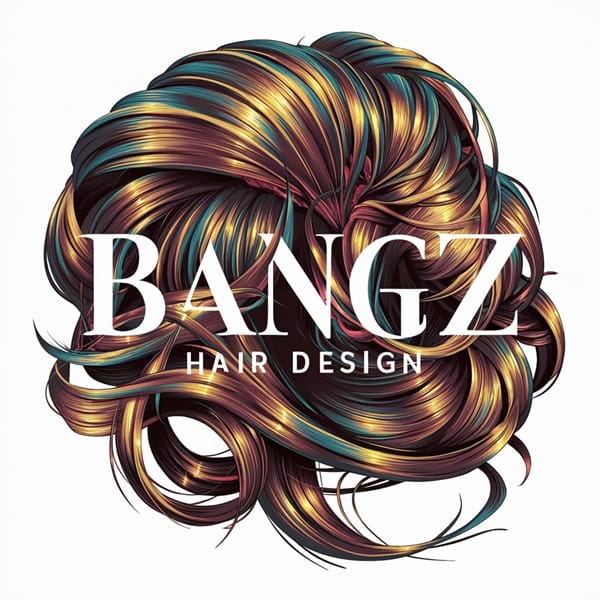Heat styling tools such as flat irons, curling wands, and blow dryers have become essential in achieving various hair looks. However, frequent use of these tools can lead to damage, which may compromise the health and appearance of your hair.
Understanding the risks associated with heat styling and learning how to protect your hair is important for maintaining strong, vibrant hair.
The Science Behind Heat Damage
Hair Structure 101
Our hair has several layers, with the cuticle being the outermost protective covering. When we apply heat, those delicate cuticle scales open up, allowing heat to penetrate deeper into the cortex. Here’s how it all breaks down:
- Cuticle Layer: This comprises overlapping shingle-like cells that protect the inner structures. It’s the first line of defense against heat.
- Cortex: The core of our hair where the real magic happens. This layer contains keratin proteins and is responsible for strength and elasticity.
What It Does
Heat tools break the hydrogen bonds in hair, making it malleable for styling. However, excessive heat can lead to:
- Structural damage: Repeated exposure weakens the hair, making it dry, brittle, and prone to breakage.
- Denaturation of proteins: Using tools at high temperatures can cause proteins in the cortex to denature, losing elasticity and strength.
Common Signs of Heat Damage
- Dry and Brittle Hair: One of the first signs I noticed was the dryness in my strands. Heat exposure strips the hair of its natural moisture, leaving it feeling rough and fragile. When running your fingers through your hair, if it feels coarse or lacks that silky smoothness, it’s time to act.
- Split Ends: Split ends are like the battle scars of hair damage. They occur when the protective cuticle is compromised, leading to fraying. Regular trims helped me manage this issue, but keeping an eye on my hair’s ends was essential.
- Frizziness: Frizz can easily turn a polished look into a messy one. Heat damage often lifts at the cuticle layer, causing it to tangle easily and create an unruly texture.
- Lack of Elasticity: Healthy hair bounces back when stretched, but heat damage disrupts this elasticity. If hair feels like it can’t return to its original shape, it’s a signal of deep-seated water loss. By actively checking for these signs, you can take the necessary steps to restore hair’s vitality and appearance!
Preventing Heat Damage
While it may be challenging to avoid the use of heat styling tools completely, several strategies can help minimize damage:
- Use a heat protectant spray or serum before applying heat to your hair. These products form a barrier that helps to minimize damage.
- Adjust the settings on your styling tools to a lower temperature. Lower temperatures can still achieve the desired results while reducing the risk of damage.
- Avoid using heat styling tools on wet hair, which can cause additional damage and weaken the hair shaft.
- Incorporate regular deep conditioning treatments into your hair care routine to help restore moisture and strengthen the hair.
- Limit the frequency of styling and embrace natural styles to give hair a break from excessive heat exposure.
Facts About Heat Styling and Hair Health
Here are some important facts to keep in mind when it comes to heat styling and maintaining healthy hair:
- Regular Deep Conditioning: Trust me when investing time into deep conditioning has made a difference. Utilizing masks formulated with natural oils or proteins helps restore moisture and strength. Aim for deep conditioning once a week for optimal results.
- Limit Heat Exposure: I decided to cut back on heat styling and, instead, embraced air-drying techniques. This simple shift allowed my hair to recover from damage while still looking stylish.
- Healthy Trims: Scheduling regular trims every six to eight weeks keeps split ends at bay and promotes healthier hair growth. I always feel lighter and fresher after a trim!
- Mindful Product Choices: I’ve learned to read labels and select products with nourishing ingredients, avoiding harsh chemicals that can lead to further damage. Opting for sulfate-free shampoos was a game-changer for my routine.
Embracing Healthy Hair Practices
- Use Heat Protectants: Always apply a protective spray before using any styling tool.
- Experiment with Lower Temperatures: When trying different styles, keep the settings below 350°F.
- Limit Frequency: Reducing how often you style your hair with heat can make a significant difference in maintaining health.
By being aware of the factual implications of heat styling, I can confidently rock my look while keeping my hair healthy. Balancing style and care is truly what it’s all about!
Welcome to Bangz Hair Design, where we believe in exceeding expectations with every visit! I’m Jearri, the proud owner of this incredible salon. Our highly skilled and elite team is dedicated to providing exceptional service and stunning results. Come experience the difference at Bangz Hair Design – where your satisfaction is our top priority! 💇♀️✨



